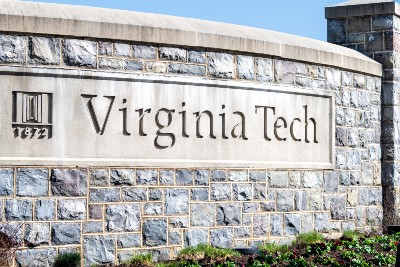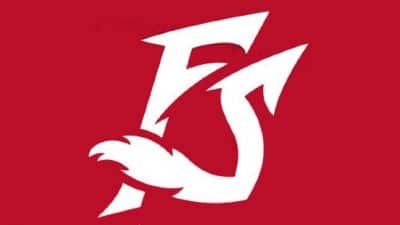
In a sliding drawer, rodent specimens are arranged in a neat row. Across the room, a cabinet holds an assortment of skulls: raccoon, bobcat, black bear, etc. In an adjacent room, a rolling shelf is cranked to reveal jars of fish and amphibians preserved in liquid, their Latin names written in fading ink. Overhead, a hawk appears in mid-flight, ready to sweep across the room.
This is Virginia Tech’s natural history collection, curated and used as a critical learning tool for students and faculty in the College of Natural Resources and Environment.
“Currently, the collection is mainly here for teaching,” Assistant Professor Kevin Hamed of the Department of Fish and Wildlife Conservation said. “We use the specimens in our Wildlife Field Biology course, in mammalogy, in herpetology, [and] in ichthyology. The specimens that we have provide our students with the opportunity to see these animals up close without having to travel throughout the state.”
Learning how to identify species is a crucial skill for students who will be pursuing careers or graduate degrees in wildlife conservation.
“The students who benefit from our collection are students thinking about careers as wildlife biologists for state or federal agencies or nongovernment organizations or private firms,” Assistant Professor Brett Jesmer said. “They might be doing surveys of an endangered species or looking into the population dynamics or disease ecology of small mammals.”
The collection also is used in conservation outreach. Faculty and staff from the college often bring samples of beaver pelts and snake skins to local schools, so that young students get to enjoy hands-on experiences with area wildlife.
And, as Hamed said, having a collection that reflects the range of fauna in Appalachia can serve as a potential data set for researchers studying current wildlife challenges.
“There is a fungal disease that is negatively impacting rattlesnakes, and researchers wondered why this illness started showing up 10 years ago,” Hamed said. “Researchers went into their collection and looked at rattlesnakes from the 1950s, and those species had the same disease. So, the question becomes what has changed in our environment to make this disease more dangerous.”
Finding the art in order — and family, genus, and species
For Ph.D. student Katie Gorman, working with natural history collections has allowed her to merge an undergraduate degree in art history with a passion for conservation.
“I did my undergraduate degree in art history, so I was always interested in museum work,” said Gorman, who is researching northern long-eared bats as part of her degree in fish and wildlife conservation. “Going into conservation work, the idea of working with a natural history collection just clicked.”
Gorman’s interest in collection work began with an internship at the Georgia Museum of Natural History. That experience led to Gorman contacting Virginia Tech and offering to apply her new knowledge to the task of organizing and enhancing the Cheatham Hall collection.
Starting with the drawers that contained scattered skulls, Gorman organized the collection taxonomically: class, order, family, genus, species, and subspecies. She also went through the collected furs — or “skins,” in collections parlance — of overrepresented species, selecting the best samples for use in classes while storing others for future use. In addition, she worked to update the database of represented animals, so that future researchers and educators know the availability of these animals and where to find them.
“It’s still a work in progress,” Gorman said. “But I’ve enjoyed the challenge of it. I’m interested in education and outreach work, and I hope that this will help me toward a career that balances working in the field with connecting with people.”
Animals in the attic
Currently, new additions to the natural history collection often arrive via established connections between Virginia Tech and area wildlife rehabilitation centers or veterinarians. Injured wildlife that ultimately die give researchers the opportunity to preserve the external fur and feathers for education or outreach purposes. Researchers are also able to create partial or full skeletons that can reveal hidden characteristics about species.
“That is a critical part of our collection — the bones,” Jesmer said. “Particularly with smaller mammals, teaching students how to differentiate between species sometimes comes down to the teeth or jaw providing a clear giveaway that you’re looking at one species or another.”
To bolster the collection — and perhaps expand the range of species represented — Hamed and Jesmer welcome any offers of donations.
“Our hope is that somebody might be sitting at home with a collection that their parents or grandparents had, and they decide they don’t really want that bear or bobcat in the living room anymore,” Hamed said. “Giving a gift like that to our collection means that they can continue to honor their family’s legacy, while also helping a new generation of conservation scientists.”
Among the animals on their wish list are many species of birds and mammals, including those from the American west. They welcome all inquiries about potential gifts, but limits on space mean that they need to be selective about what specimens to enter into the collection.
“Every student who comes out of our fish and wildlife program is going to interact with our collection in some way,” Hamed said. “The more diversity we have in our collection, the greater the benefit is to our students.”
Individuals interested in contributing to Virginia Tech’s natural history collection can send queries to [email protected].










